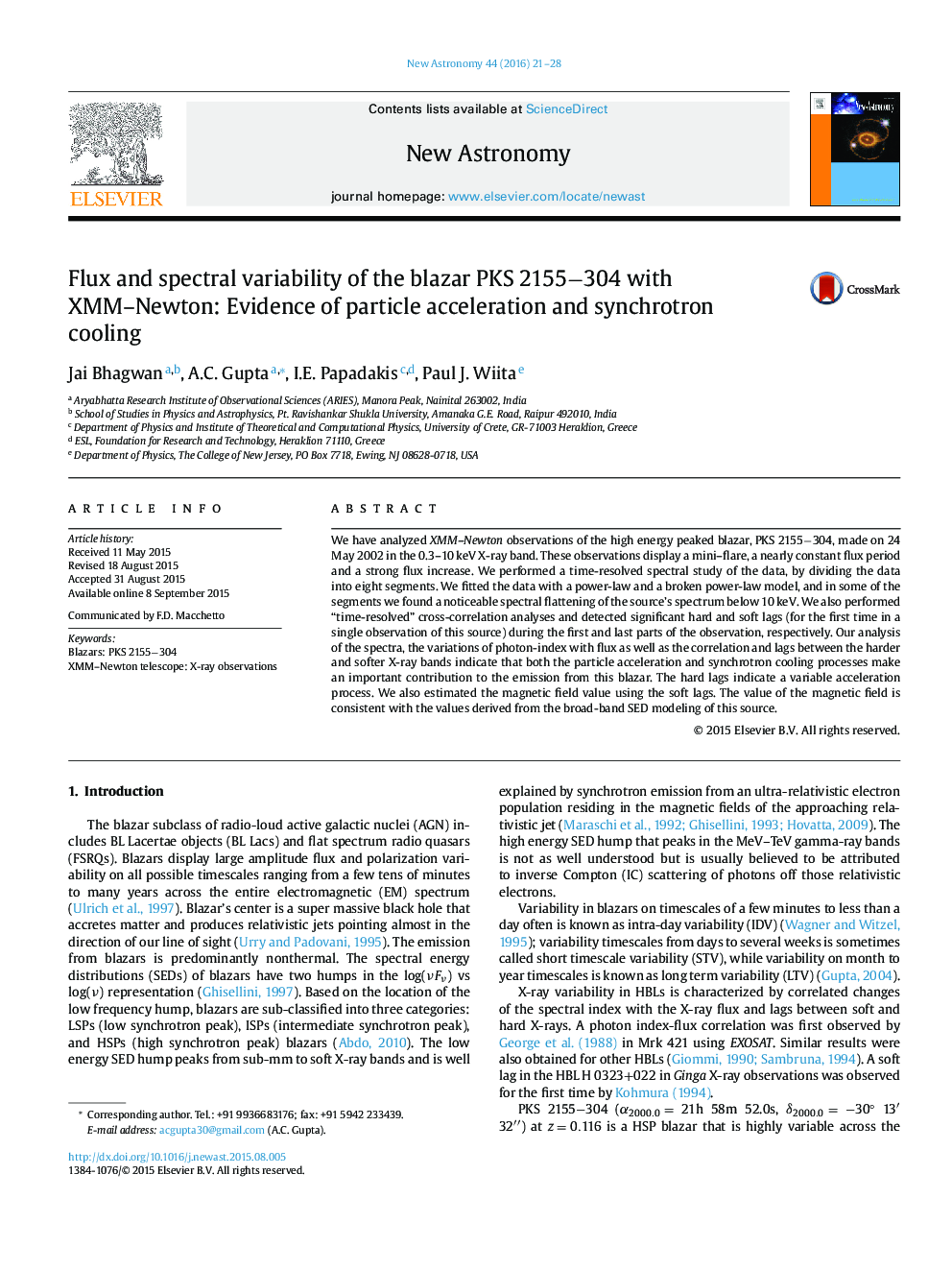| Article ID | Journal | Published Year | Pages | File Type |
|---|---|---|---|---|
| 1778813 | New Astronomy | 2016 | 8 Pages |
We have analyzed XMM–Newton observations of the high energy peaked blazar, PKS 2155−−304, made on 24 May 2002 in the 0.3–10 keV X-ray band. These observations display a mini–flare, a nearly constant flux period and a strong flux increase. We performed a time-resolved spectral study of the data, by dividing the data into eight segments. We fitted the data with a power-law and a broken power-law model, and in some of the segments we found a noticeable spectral flattening of the source’s spectrum below 10 keV. We also performed “time-resolved” cross-correlation analyses and detected significant hard and soft lags (for the first time in a single observation of this source) during the first and last parts of the observation, respectively. Our analysis of the spectra, the variations of photon-index with flux as well as the correlation and lags between the harder and softer X-ray bands indicate that both the particle acceleration and synchrotron cooling processes make an important contribution to the emission from this blazar. The hard lags indicate a variable acceleration process. We also estimated the magnetic field value using the soft lags. The value of the magnetic field is consistent with the values derived from the broad-band SED modeling of this source.
